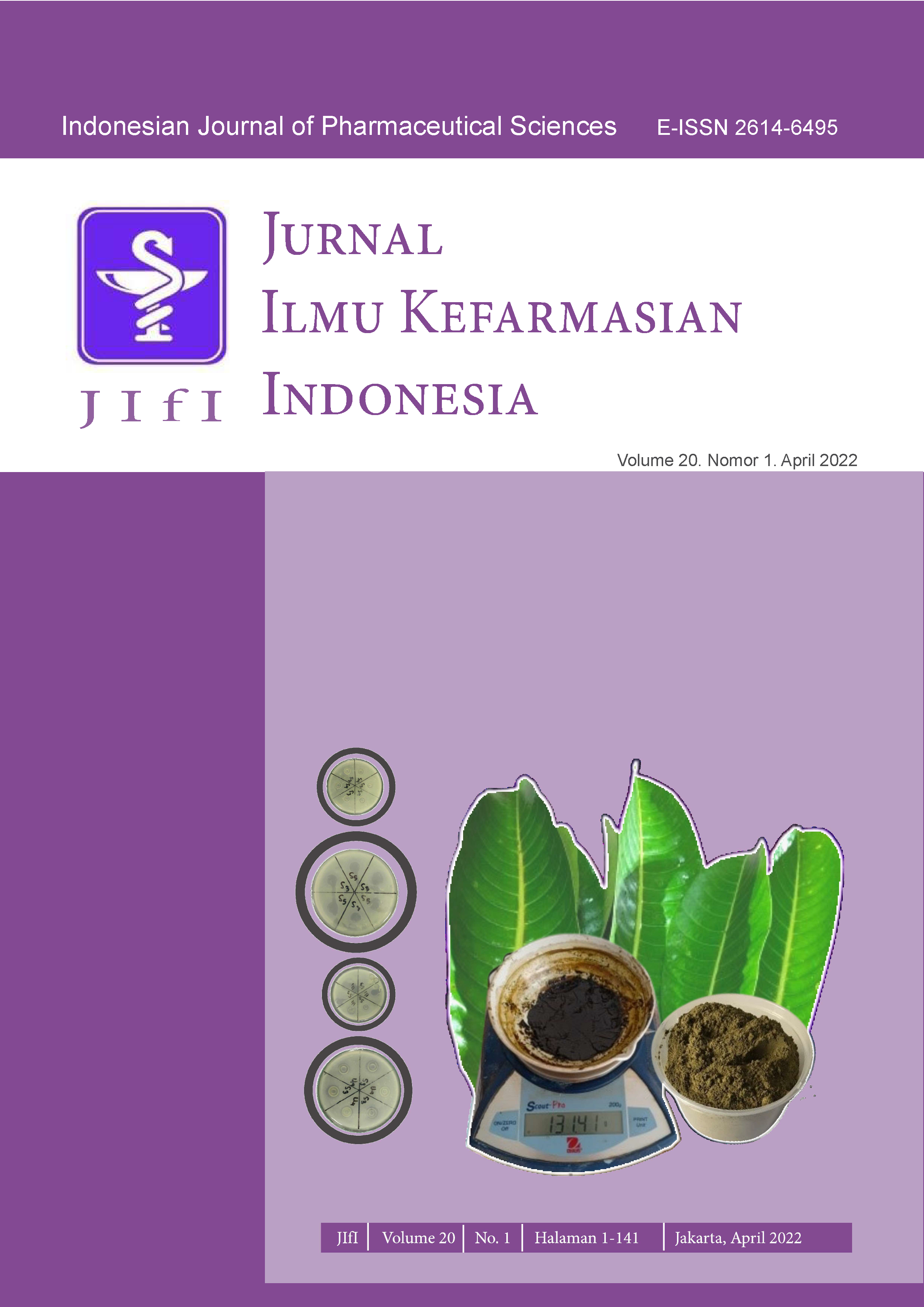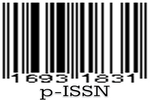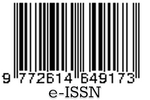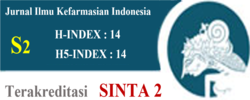The Relationship Between Demographics of Pharmaceutical Workers and Patient safety at The Sultan Agung Islamic Hospital in Semarang City
Abstract
Patient safety is a fundamental element in providing patient care and is a component of patient rights. Pharmaceutical services are one aspect of patient safety implementation. Patient safety is a variable used to monitor and evaluate the service quality of pharmacy staff in hospitals. This study aims to determine the relationship between the demographic characteristics of pharmaceutical personel with the implementation of patient safety at the Sultan Agung Islamic Hospital, Semarang City. This research is an analytic observational study using a cross sectional design. The research subjects who met the inclusion criteria were 39 pharmacists. Data collection was carried out in November 2020 using a questionnaire adapted from 6 patient safety aims by the 2018 National Hospital Accreditation Standard (SNARS) edition 1.1. Data analysis using Spearman's-Rho and Eta correlation test. The results of research conducted from 39 respondents showed that the implementation of patient safety has been carried out properly. This is due to there was a demographic correlation on patient safety including length of work for patient safety of 0.672 and a weak correlation between age and education status on the implementation of patient safety at the Sultan Agung Hospital, Semarang. The correlation coefficient values are 0.238 and 0.370 with a significance value of p<0.05. There is a significant relationship between length of work and the application of patient safety and there is no significant relationship between gender, profession, marital status, age, last education and place of work with a significance of p> 0.05.
References
2. Fadillah B, Nisa SA. Membudayakan patient safety sebagai bentuk dari organisasi reform dalam mencegah human err. Ber Kedokt Masy. 2018;6.
3. WHO. Medication Without Harm. World Heal Organ [Internet]. 2017;16. Available from: http://apps.who.int/iris/bitstream/10665/255263/1/WHO-HIS-SDS-2017.6-eng.pdf?ua=1&ua=1
4. Kementrian Kesehatan RI. Standar Nasional Akreditasi Rumah Sakit. 2018;1–27.
5. Perwitasari DA, Abror J, Wahyuningsih I. Medication errors in outpatients of a government hospital in Yogyakarta Indonesia. Int J Pharm Sci Rev Res. 2010;1(1):8–10.
6. Komite Akreditas Rumah Sakit (KARS). Standar akreditas Rumah Sakit Jilid I. 2017;421.
7. Virawan 2012. Faktor-Faktor Yang Mempengaruhi Kepatuhan Staf Perawat Dan Staf Farmasi Menggunakan Enam Benar Dalam Menurunkan Kasus Kejadian Yang Tidak Diharapkan Dan Kejadian Nyaris cedera Di Rumah Sakit Umum Surya Husadha. Tesis. 2012;1:83.
8. Satibi S, Daulay EH, Oviani GA, Erlianti K, Fudholi A, Puspandari DA. Performance Analysis of Pharmacist and Influencing Factors in the Era of National Healt Insurance at Puskesmas. J Manaj DAN PELAYANAN Farm (Journal Manag Pharm Pract. 2018;8(1):32.
9. Gunawan G, Harijanto H, Harijanto T. Analisis Rendahnya Laporan Insiden Keselamatan Pasien di Rumah Sakit. J Kedokt Brawijaya. 2015;28(2):206–13.
10. AHRQ. 2012 Preliminary Comparative Results: Pharmacy Survey on Patient Safety Culture. (Prepared by Westat, Rockville, MD, under Contract No. HHSA 290200710037.). 2012;(12). Available from: http://www.ahrq.gov/professionals/quality-patient-safety/patientsafetyculture/pharmacy/2012/pharmsops_pilotresults.pdf
11. Trisnawati D, Kusumapradja R. The Differences in Patient Safety Culture (Before and After Training ) over Patient Safety on Pharmacy and Radiological Installations at Type B Hospital , Jakarta. 2020;04(06):319–23.
12. Tamuz M, Thomas EJ, Franchois KE. Defining and classifying medical error: Lessons for patient safety reporting systems. Qual Saf Heal Care. 2004;13(1):13–20.
13. Kaufman G, McCaughan D. The effect of organisational culture on patient safety. Nurs Stand. 2013;27(43):50–6.
14. Yismaw MB, Tesfaye ZT, Hailu HG, Tegegn HG, Gebreyohannes EA. Evaluation of patient safety culture among community pharmacists in Ethiopia: A cross-sectional study. PLoS One [Internet]. 2020;15(8 August):1–12. Available from: http://dx.doi.org/10.1371/journal.pone.0237338
15. Iqbal MS, Ahmed NJ, Iqbal MZ. Medication Errors Identification Rates by Healthcare Students. J Pharm Res Int. 2020;32(3):61–8.
16. Naser AY, Alsairafi ZK, Awaisu A, Alwafi H, Awwad O, Dahmash EZ, et al. Attitudes of pharmacy students towards patient safety: A cross-sectional study from six developing countries. BMJ Open. 2020;10(12).
17. Khoshakhlagh AH, Khatooni E, Akbarzadeh I, Yazdanirad S, Sheidaei A. Analysis of affecting factors on patient safety culture in public and private hospitals in Iran. BMC Health Serv Res. 2019;19(1):1–14.
18. Alahmadi HA. Assessment of patient safety culture in Saudi Arabian hospitals. Qual Saf Heal Care. 2010;19(5).
19. Jamili S, Ebrahimipour H, Hooshmand E, Esmaily HO, Najar AV. Assessment of Patient Safety Culture in a Selected Number of Pharmacies Affiliated to Mashhad University of Medical Sciences Using the Pharmacy Survey on Patient Safety Culture ( SOPS ) Article history : 2014;1:2–7.
20. Pambudi YSAYD. Faktor-faktor yang mempengaruhi perawat dalam penerapan 6 SKP (Sasaran Keselamatan Pasien) pada akreditasi JCI (Joint Commision International) di ruang rawat inap rumah sakit panti Waluya Malang. Nurs News (Meriden). 2018;3(1):729–47.
21. Nordén-Hägg A, Kälvemark-Sporrong S, Lindblad ÅK. Exploring the relationship between safety culture and reported dispensing errors in a large sample of Swedish community pharmacies. BMC Pharmacol Toxicol [Internet]. 2012;13(1):1. Available from: ???
22. Harahap MW. Hubungan antara Patient Safety Climate dengan Pelaksanaan Patient Safety di Rumah Sakit Ibnu Sina Tahun 2017. UMI Med J. 2019;3(1):24–35.
23. Jia PL, Zhang LH, Zhang MM, Zhang LL, Zhang C, Qin SF, et al. Safety culture in a pharmacy setting using a pharmacy survey on patient safety culture: A cross-sectional study in China. BMJ Open. 2014;4(6).
24. Alslubi H, El-Dahiyat F. Patient safety practices among community pharmacists in Abu Dhabi, United Arab Emirates. J Pharm Heal Serv Res. 2019;10(2):203–10.
25. Swastikarini S. Hubungan Umur, Tingkat Pendidikan dan Lama Kerja Perawat Pelaksana dengan Pelaksanaan Ketepatan Identifikasi Pasien di Ruang Rawat Inap. J Ilm Permas J Ilm STIKES Kendal. 2018;8(2):75–81.
26. Al-Surimi K, Alwabel AM, Bawazir A, Shaheen NA. Road towards promoting patient safety practices among hospital pharmacists Hospital-based baseline patient safety culture assessment cross-sectional survey. Med (United States). 2021;100(2).
27. Samsuri SE, Pei Lin L, Fahrni ML. Safety culture perceptions of pharmacists in Malaysian hospitals and health clinics: a multicentre assessment using the Safety Attitudes Questionnaire. BMJ Open. 2015;5(11):e008889.

This work is licensed under a Creative Commons Attribution-NonCommercial-ShareAlike 4.0 International License.
Licencing
All articles in Jurnal Ilmu Kefarmasian Indonesia are an open-access article, distributed under the terms of the Creative Commons Attribution-NonCommercial-ShareAlike 4.0 International License which permits unrestricted non-commercial used, distribution and reproduction in any medium.
This licence applies to Author(s) and Public Reader means that the users mays :
- SHARE:
copy and redistribute the article in any medium or format - ADAPT:
remix, transform, and build upon the article (eg.: to produce a new research work and, possibly, a new publication) - ALIKE:
If you remix, transform, or build upon the article, you must distribute your contributions under the same license as the original. - NO ADDITIONAL RESTRICTIONS:
You may not apply legal terms or technological measures that legally restrict others from doing anything the license permits.
It does however mean that when you use it you must:
- ATTRIBUTION: You must give appropriate credit to both the Author(s) and the journal, provide a link to the license, and indicate if changes were made. You may do so in any reasonable manner, but not in any way that suggests the licensor endorses you or your use.
You may not:
- NONCOMMERCIAL: You may not use the article for commercial purposes.
This work is licensed under a Creative Commons Attribution-NonCommercial-ShareAlike 4.0 International License.





 Tools
Tools





















